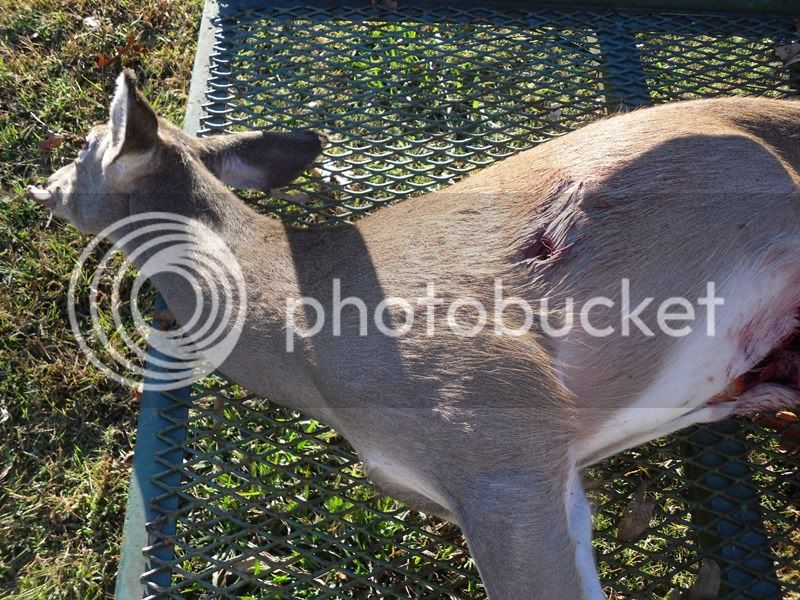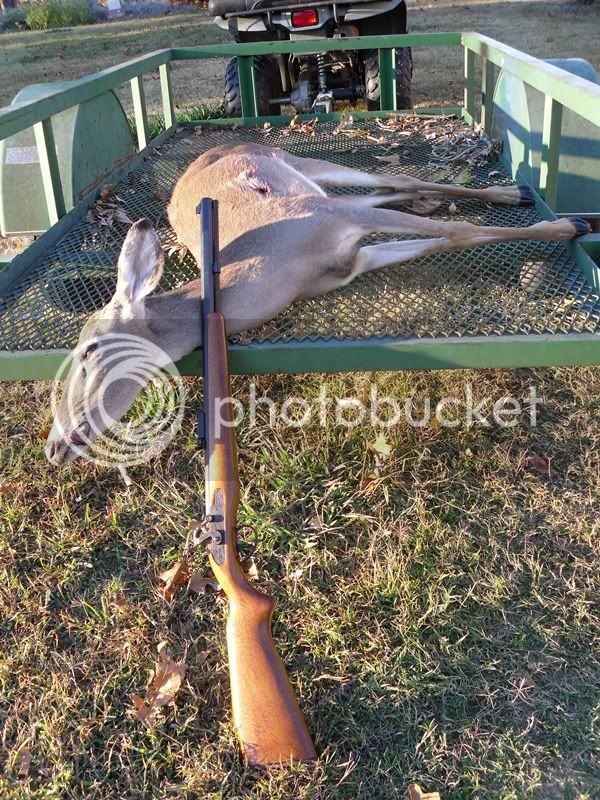Many thanks to all who offered their helpful advice and information. This was my first season using the r.e.a.l. bullet, and I wasn't sure what to expect from it's performance on game. I have shot two other deer that reacted the same way as that one did after the shot. One with a 45cal maxi ball and the other with a 243cal 80gr bullet. Both of these ran about thirty yards and stopped, staggered, fell, expired. Except this one didn't stop. And I haven't recovered any evidence (Buzzards/Crows) that she is down anywhere since. So I had to write her off as a near miss.
Update:
On 11-14-10 I got another chance to find out the answer to my question with much better results. I shot this doe at 70yds from the same stand. There was quite a bit of hair at the POI. She went crashing and fall'n down the hill as she sped off. Blood was evident. It look like it was being thrown from a bucket. Brushed on and sprayed all over saplings, switch cain, and the ground as well. I found pieces of lung and something dark I presumed to be liver in a few places along the blood trail. I was pleased with the bullet's results, but surprised at the outcome. The bullet entered the right side lung area, turned and went thru the paunch, and exited thru the front portion of the off side hind quarter. This deer reached at least the 400yd mark and laid down. Then the only sign of blood lasted about 30yds beyond that. I went back and got my son and his friend to assist me. We started the circle and search method, and found her on the other side of a thicket in a creek about 125yds from the last sign of blood. I couldn't believe how far this deer traveled in her condition, and still can't really.
This is a shot of the POI. The picture doesn't show quite as much hair that was actually there.
A view of my stand location from the POI.
My son and his friend bringing her out. I took a hatchet and cleared the way for them. :haha:
The entrance wound. How can a deer with a hit like this, losing blood like a pumping station travel over 500yds?
Got her home.
Got this one 11-15-10 from the same stand at about 30yds with a spine shot. Didn't get a pass-thru on her though. She was DRT.
Gun & load was. CVA Stalker carbine rifle, 75gr fffg Goex, 320gr r.e.a.l. bullet, lubed with stumpy's moose snot recipe, and a remington no. 11 cap. I'm done with the deer for this season, gonna get after the squirrels now.






